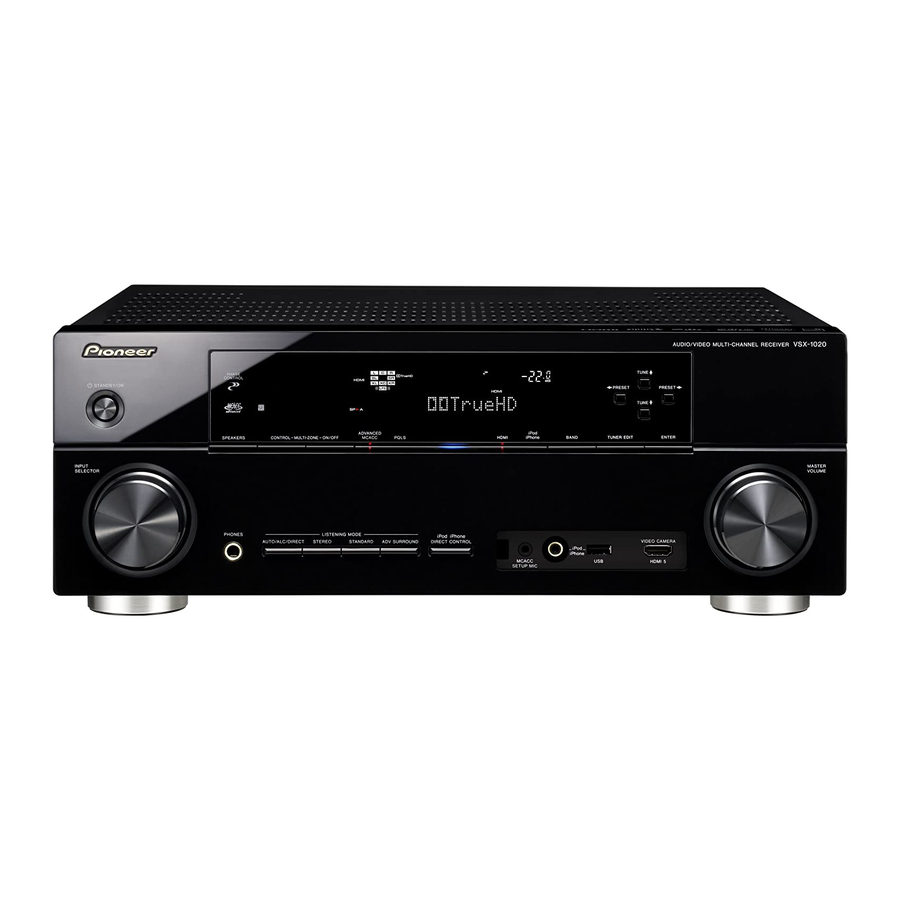
Pioneer VSX 1020 AV Receiver Manuals
Manuals and User Guides for Pioneer VSX 1020 AV Receiver. We have 1 Pioneer VSX 1020 AV Receiver manual available for free PDF download: Operating Instructions Manual
Pioneer VSX 1020 Operating Instructions Manual (260 pages)
AUDIO/VIDEO MULTI-CHANNEL RECEIVER
Table of Contents
-
English
4-
-
Rear Panel14
-
-
ZONE 2 Setup21
-
Interface32
-
-
-
-
-
Controls78
-
-
MCACC Menu85
-
-
-
Setup Menu99
-
-
Speaker Setting101
-
Channel Level102
-
Speaker Distance102
-
X-Curve103
-
-
Troubleshooting107
-
Power107
-
No Sound108
-
Video111
-
Settings112
-
Output113
-
Display113
-
Remote Control114
-
Hdmi115
-
USB Interface117
-
Internet Radio118
-
-
About Ipod119
-
About SIRIUS119
-
-
Preset Code List122
-
Specifications127
-
-
Español
132-
Receptor
135 -
-
Panel Frontal137
-
Pantalla138
-
-
-
Panel Trasero142
-
Altavoces143
-
Opcional159
-
-
-
-
-
HDMI Setup191
-
-
-
Función Directa207
-
-
Advanced MCACC213
-
-
Nivel de Canales223
-
Acoustic Cal EQ224
-
Gestión de Datos225
-
-
System Setup227
-
-
Nivel de Canales230
-
Curva X231
-
-
-
Alimentación235
-
Video239
-
Configuración240
-
Pantalla241
-
Hdmi243
-
Interfaz USB245
-
-
Acerca del Ipod248
-
Acerca de SIRIUS248
-
-
Especificaciones256
-
Advertisement
Advertisement
